The island at the back where people die – that was what Sentosa Island was once called.
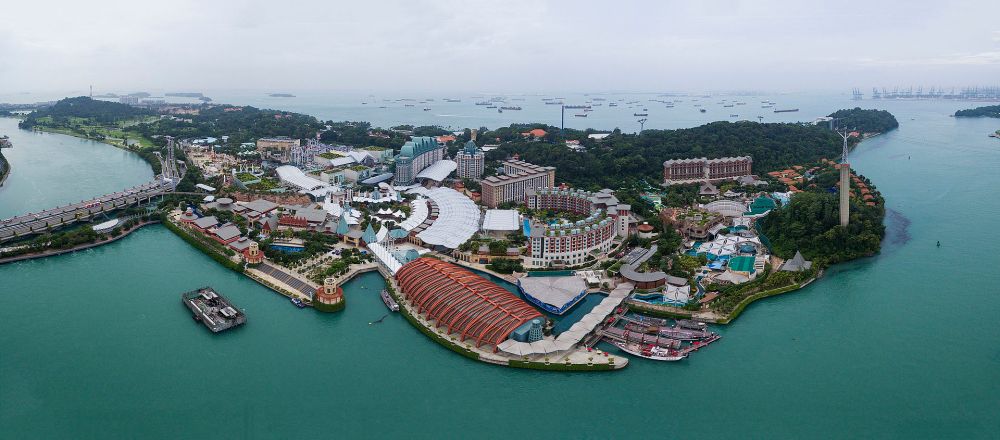 Sentosa aerial view facing south (source)
Sentosa aerial view facing south (source)
It is today the “State of Fun”
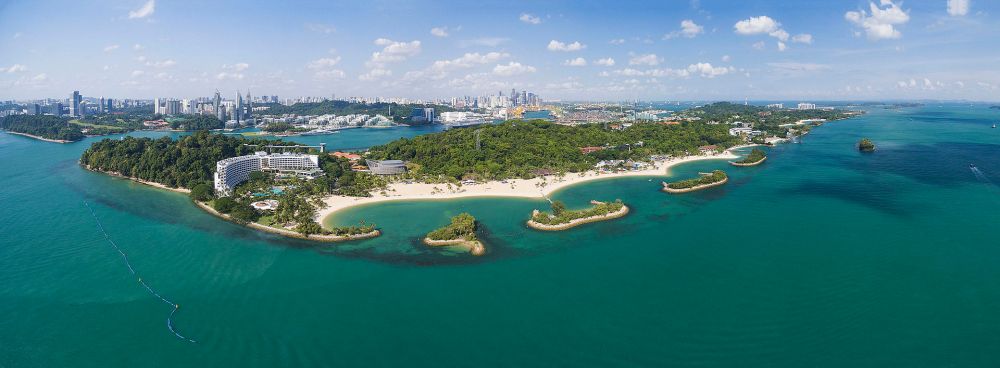 Sentosa aerial view facing north (source)
Sentosa aerial view facing north (source)
It is home to the Integrated Resort (A Casino plus somemore), Resorts World Sentosa,
Sentosa Development Corporation, that runs the island resort
Sentosa Cove and One Degree 15, homes for the super rich
and the Sentosa Golf Club.
It also houses many smaller resort getaways,
and three beaches.
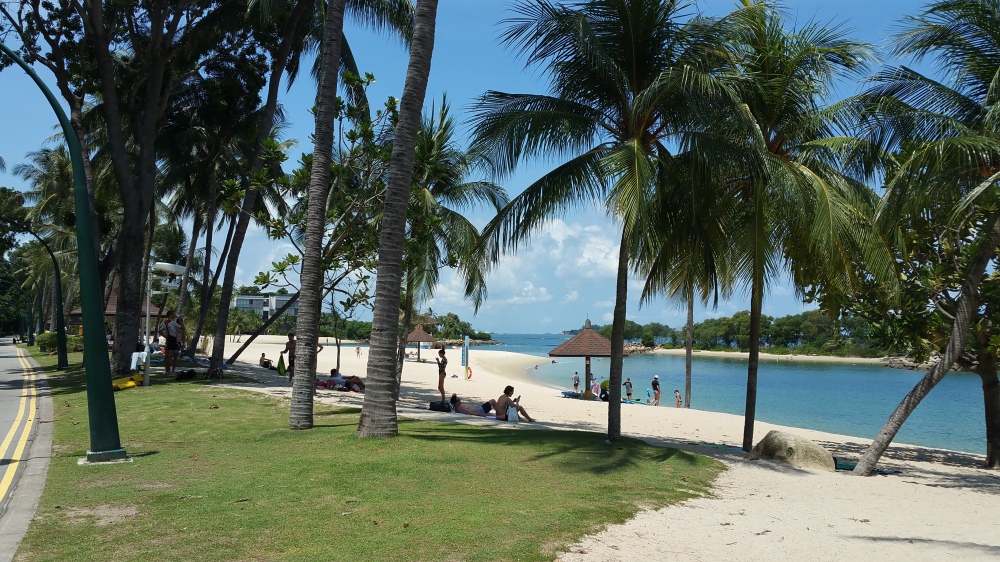 But it wasn’t always like this.
But it wasn’t always like this.
Prior to 1972, the island was known by its Malay name, Pulau Blakang Mati. The name was probably in use even before the 19th century. There are many different accounts to the name. Some say that it refers to the early piracy and bloodshed of the nearby harbour, another recounts of the island being the final resting place for warrior spirits.
Because of its strategic position south of the city, the island was part of defensive plans all the way back in 1827. In the 1880s, three forts, Serapong, Connaught and Siloso togther with a battery on a smaller hill – Mount Imbiah were completed. Sentosa formed on of the vital jigsaws to the ‘impregnable fortress’ of the 1940s.
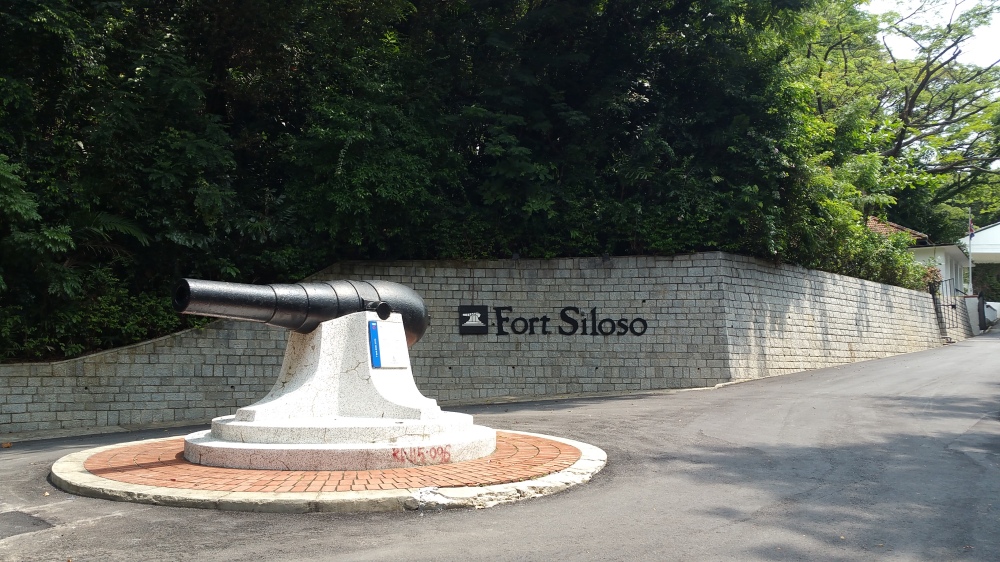 The sea-ward facing guns on Sentosa were turned north to fire over the city at the invading Japanese. These guns were however mostly useless and the guns were destroyed to prevent the Japanese from using them.
The sea-ward facing guns on Sentosa were turned north to fire over the city at the invading Japanese. These guns were however mostly useless and the guns were destroyed to prevent the Japanese from using them.
The ominous sounding name took on an even greater resonance in the
During the Japanese occupation, thousands of Chinese men were killed along the beaches of the island in Operation Sook Ching. 400 Allied prisoners were held on the island in a POW camp. Also on the island was a unit of the Japanese air force and a Korean comfort women.
Infopedia has a fascinating story on how the island went from its dark past to its bright and sunny state today.
The Malaysia Agreement of 1963, which laid out terms and conditions for the formation of the Federation of Malaysia, included a clause for the transfer of areas previously under the British War Department, including Pulau Blakang Mati, to Singapore. With the near-complete withdrawal of the Gurkha units in 1967, the island came under the jurisdiction of independent Singapore from 1 September 1967. The Singapore Naval Volunteer Force was relocated to the island after the handover.
At the time leading to the handover of the island, a number of government ministries and agencies sought the island for a variety of proposed uses, including as a port and industrial complex, a tourist resort with a casino as well as for military installations. Then-Minister for Law and National Development E. W. Barker said in August 1967, “The Defence Minister wants the security guns there first. The Finance Minister wants part of the island for industries and the Port of Singapore Authority needs it for more deepwater berths. I sincerely hope tourism will not be left out.”
In 1966, a Singapore–Canadian team of experts were engaged in a S$1.2-million study of the potential uses of Pulau Blakang Mati. The study, completed in 1968 and released to the public the following year, found that the island had suitable deepwater berths for wharves, but the surrounding sea lanes were too congested for further development. This rendered a port and industrial complex on Pulau Blakang Mati a less attractive prospect; at the same time, the withdrawal of British military forces from Singapore by 1971 would also free up a dockyard at Sembawang and other former military areas for industrial use.
Albert Winsemius, an economic advisor to the government, later revealed that an agreement had been reached between energy company Esso and the government for the construction of an oil refinery on Pulau Blakang Mati, with a planned expansion into a petro-chemical complex. In mid-1967, Winsemius urged the government to reconsider the plan, stating that space for recreation and tourism would be at a premium.
Enlisting the help of Alan Choe, then head of the former Urban Renewal Unit (now the Urban Redevelopment Authority), Winsemius convinced then Prime Minister Lee Kuan Yew with an economic paper and Choe’s resort proposals. He also negotiated with Esso, pointing out to them that a refinery on Pulau Blakang Mati, close to Singapore’s city centre, would attract criticism for air pollution and potentially hinder expansion. An alternative location in the Jurong industrial estate was agreed upon.
The focus thus turned to tourism, with the then Singapore Tourist Promotion Board (STPB; now the Singapore Tourism Board) mooting a resort with a casino, a greyhound racing stadium, hotels and other attractions. Investors from Hong Kong, Macau, Singapore and the United States were said to be interested in the venture.
It’s history since then is no less interesting.
Sentosa opened with a bang. It began with a cable car system from nearby Mount Faber to the island, the Sentosa golf course, Beaches, Fort Siloso, a butterfly park among others. However Sentosa never really took off. It struggled to attract private investment and faced a barrage of complaints on the quality of its facilities. The cable car system dislodged in 1983 and 7 lives were lost. That dark chapter exacerbated the decline of Sentosa.
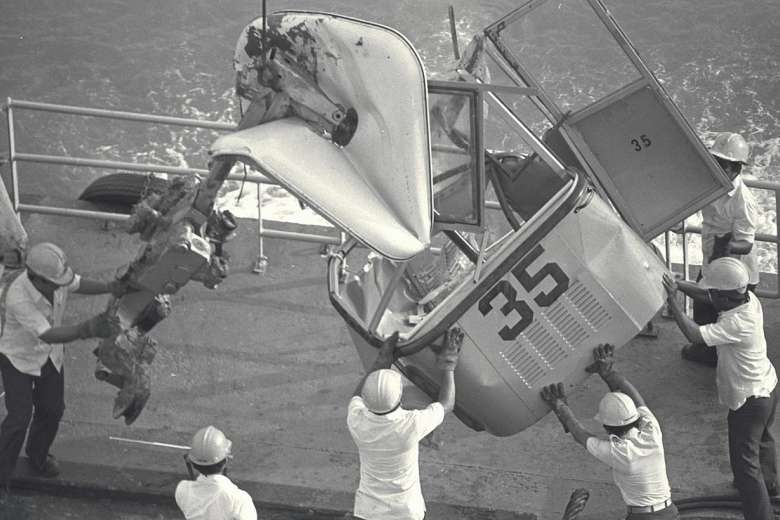 Workers recoving one of the cable cars in the Sentosa Cable Car Tragedy of 1983 (source)
Workers recoving one of the cable cars in the Sentosa Cable Car Tragedy of 1983 (source)
By the late 1990s it was a sorry excuse of an adventure island. A massive overhaul was undertaken at the turn of the millennium with newer consolidated facilities, cheaper prices and more exciting activities. Among the activities were iFly (here is a video of the top team in Singapore, Team Firefly),
ZoukOut,
and the MegaZip Adventure Park.
The piece de resistance came in 201 with Resorts World Sentosa.
Has Sentosa finally left its dark past behind? Only time will tell.
How to get there (take a train from Vivocity Level 3, or cross the Sentosa Broadwalk from Level 1 of Vivocity)
1 Comments Add yours